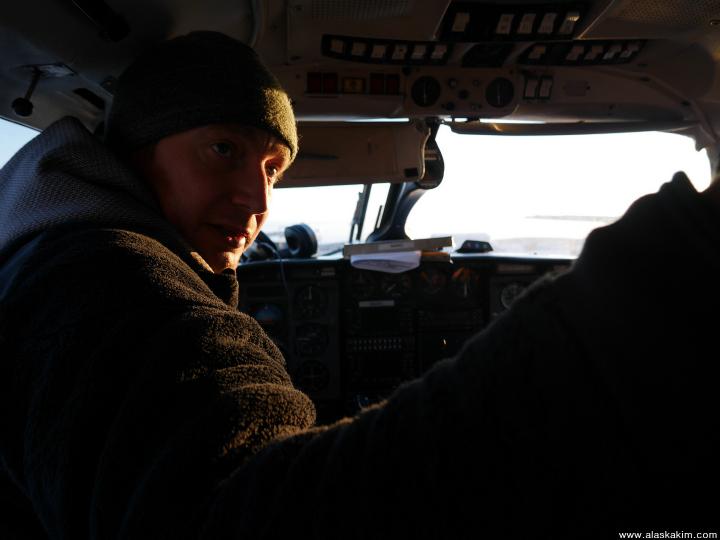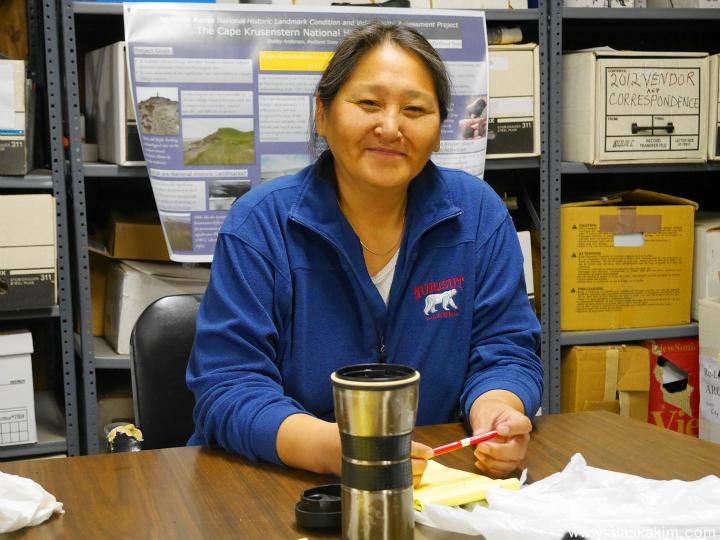Kivalina
Kivalina is a town and Inupiat Alaska native Eskimo village in Northwest Arctic Borough with a population of about 374.
The island where the village is located is threatened by rising sea levels and coastal erosion. In 2013, it was predicted that the island will disappear by 2025.
Because of severe sea wave erosion during storms, the town hopes to relocate again to a new site 7.5 miles (12 km.) from the present location- alternate sites are currently being studied. The U.S. Army Corps of Engineers estimates the cost of relocation to run between $95 and $125 million, while the Government Accountability Office (GAO) has estimates between $100 and $400 million. The town’s environmental issues were featured in "Alaska: State of Emergency," a Weather Channel documentary in 2015.
The community called Kivalina was first reported in 1847 by the Imperial Russian Navy. For many years it has been a stopping place for travelers between Arctic coastal areas and communities in the Kotzebue Sound. It is the only place in the region where people hunt the bowhead whale. Although the village was originally located at the north end of the Kivalina Lagoon, it relocated once before. About 1900, reindeer were brought to the area around the village, and some residents were trained as reindeer herders.

This is Anchorage Airport. To go to Kivalina, you have to take Alaska Airlines to Kotzebue first. The airfare to Kotzebue was around $700~750, and the rates change depending on the dates. There are 2 or 3 flights daily, and it takes about an hour by air to get there from Anchorage.

This is Kotzebue airport where we arrived. We had to take another flight from here to get to Kivalina.

We went to Ravn, Alaska, to take a flight to Kivalina. It took about another hour to get to Kivalina from Kotzebue.
The airfare was about $350 per person for a round trip. The cost to visit this Alaskan village became more expensive than traveling to Hawaii or Europe.

The pilot helped carrying the bags and was very nice. The 10-passenger plane finally took off to Kivalina.

Red Dog Mine
Located in the DeLong Mountains (in the remote western Brooks Range), Red Dog Mine is about 90 miles (140 km.) north of Kotzebue and 55 miles (89 km.) from the Chukchi Sea, in the Northwest Arctic Borough.
The mine is the largest source for zinc in the world and is also a significant source for lead. Construction of the mine began in 1987 after surveys showed the area to be rich in metals.

Once the airplane arrived at Kivalina, a native came out greet us.
There is one resident taking care of the airport part, and the person delivers mail and packages to the post office every day.

This is the only post office in Kivalina.

Well…technically it’s not an airport, it is an airstrip. It was easy that there were no security checks. The Kivalina airstrip was built in 1960, 9 years before Kivalina incorporated as a city.

This was the only general store in Kivalina.
On December 5, 2014, the only general store in Kivalina burned down.

Instead of a school bus, kids go to school in an ATV like this.
Almost 1/3 of population here has the same last name and is related to each other.

This was the only drinking water line. It was 25 cents for 5 gallons, and the water tasted a little salty. So I wondered if sea water is mixed with it.

This was the morning sunrise in Kivalina.

This is the meal that I had during my stay there.
This level of meal was considered as a luxury in Kivalina.
There is no commercial lodging here. Visitors can stay at the classroom or the document storage area at the village school with a donation of $100 per day.
The houses in Kivalina do not have bathroom facilities. People here use baskets as toilets and dump the human waste into plastic bags and then throw them in the field.
The school is the only place with a bathroom in the village.
For vehicles, either a snow mobile or ATV can be rented from residents for $100 per day.

This person is the head of the community. She was full of love and pride of the village.

We visited one of Kivalina’s residents.

He is the last captain for bowhead whale fishing
Kivalina is the only village in the region where people hunt the bowhead whale.
The Inupiat people of the region have hunted gigantic bowhead whales for generations from camps on top the sea ice that extends from the shore of the village.
Changes in the climate have thinned the ice so much that it is now too dangerous to continue hunting the whales. It may soon be too dangerous to live here at all, with less sea ice to protect the barrier island from powerful waves washing across the village.
I felt the effects of climate change keenly.
*This posting was translated. Click here to read the original version.
 Forward
Forward Twitter
Twitter Google+
Google+ LinkedIn
LinkedIn

